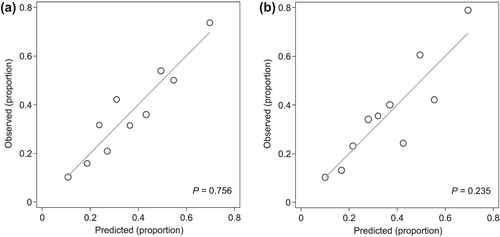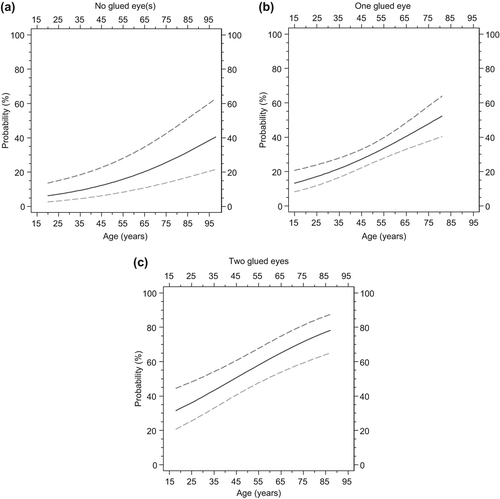Figures & data
Table 1. Patient characteristics and pathogen species.
Table 2. Index tests and their univariable odds ratios for the combined dataset (n = 386). Values are numbers (%), unless stated otherwise.
Figure 1. (Hosmer–Lemeshow) Calibration plots showing how the diagnostic probabilities of a positive bacterial culture predicted by the models correspond with the observed probabilities in ten groups of about equal size. (a) Model including age and the number of glued eyes at awakening derived on combined data (n = 386). (b) Model including age, the number of glued eyes at awakening and type of redness. Note how discrepancies between predicted and observed probabilities increased, particularly in the highest four deciles, compared to the left graph. The P-value for the fit has decreased from 0.756 to 0.235, indicating overall worse calibration.

Figure 2. Diagnostic probabilities of a positive bacterial culture as a function of age and the number of glued eyes at awakening in patients presenting to a general practitioner with symptoms of conjunctivitis. Diagnostic probabilities (prevalence) and 95% confidence limits of a positive bacterial culture as depending on age for patients with symptoms suggestive of acute conjunctivitis and who report to have no (a), one (b), or two (c) glued eyes at awakening. Probabilities and their 95% confidence limits were calculated after (parameterwise) shrinkage of the regression coefficients for age and the number of glued eyes at awakening to enhance application of the model to external populations.

